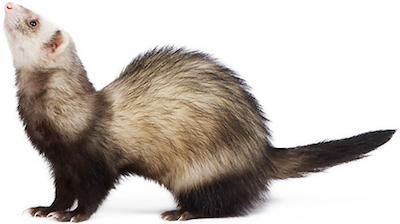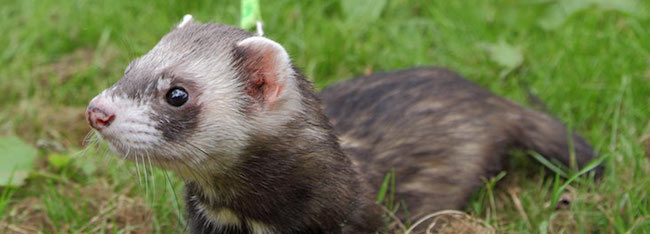Ferret is a mammal that belongs to the Mustelidae family. Other animals such as weasels and mustela also come from the same genus. To know more about ferrets, lets us take a short tour of his life, habits, features, and history.
Contents
What is the Lifespan of a Ferret?
Ferrets can live for about 7 to 10 years in the wild. They belong to the mustelid group where many other species of the family with similar names are endangered. Also, the native fauna of New Zealand has received harm because of the hybridization of ferrets with polecats. As an outcome, New Zealand, along with some other countries, has put a ban on keeping ferrets.
The word “ferret” has derived from a Latin word “Furittus” which means “little thief”. Ferrets are named after this word because of their habit of stowing away small things.
Characteristics of a Ferret
The average length of a ferret is around 20 inches including the tail of about 5 inches. Male ferrets are usually larger than females as these are sexually dimorphic animals. A ferret has a fur coat of brown, white, black, or mixed color.

Ferrets are long and slim, weighing around 1.5 to 4.5 Lbs. A female ferret can give birth to two-three litters a year. Each litter may comprise 3 to 7 kits. Ferrets become an adult by 6 months of their age.
Behavior
Ferrets, being crepuscular, are active from dusk till dawn and sleep for about 14-18 hours a day. If you keep them as pets in a cage, you should allow them to exercise and play out of the cage for at least an hour daily.
Ferrets enjoy staying in their social groups, unlike animals who prefer solitude. Ferrets mark their territories with a scent, perspired from the glands near their anus. They burrow through the ground and prefer to sleep in a closed secure place.
To recognize other animals, individuals, and their sex, ferrets sniff their anal glands. Ferrets also leave urine markings for recognition. They even release this scent when scared or shocked. In the US, ferrets are sold after removing their anal glands. However, many other countries do not perform this procedure.
When excited, ferrets would hop sideways. This behavior is considered joyful, giving an invitation to play. They hiss on feeling a possible threat from another animal or individual.
Diet
Ferrets, being obligate carnivores need meat for survival. Their daily diet in the wild includes smaller animals or birds: meat, bones, organs, skin, and even furs and feathers. They eat quite frequently because of a fast metabolism rate. The animal cannot digest a plant-based diet.
Health
Ferrets may suffer from all the health issues that a cat or a dog in the wild suffer. But the most common ailments a ferret gets are cancers of adrenal glands, lymphatic system, and pancreas.
They also get infected by viral diseases such as influenza. Ferrets may even chew or swallow foreign objects causing bowel obstruction.
Domestication of Ferrets
The history of ferret domestication is uncertain. However, through researches, it is assumed that ferret domestication started around 2,500 years ago. In some parts of the world, ferrets are still used to hunt rabbits, but at most places, they are kept as pets.

Ferrets to Protect Crops
In the 17th century, between 1860 till World War II, ferrets were used to protect grain stores from rodents in West America.
Later, to date, farmers use ferrets to hunt rabbits and rodents to protect their crops. However, this process is considered illegal in many other countries because of the ecological imbalance it causes.
Ferrets As Pets
Ferrets were introduced as pets around the 1980s in the USA. But ferrets need to be placed in a cage. As ferrets sleep almost all day, they can safely rest in the cage. They can be left free in the house for an hour daily to run, hop, exercise, and play.
Note: It is illegal to keep ferrets as pets in many countries, while many countries have rules and restrictions to adopt a ferret.
Other Uses Of Ferrets
Ferrets are also used as experimental animals by medical scientists. They are also used to perform various studies and treatments. Because they have many physiological features similar to humans, they are used in the fields of virology, neuroscience, endocrinology, and more. In some rural areas of the UK, the ferret race is conducted regularly in fairs and festivals.
